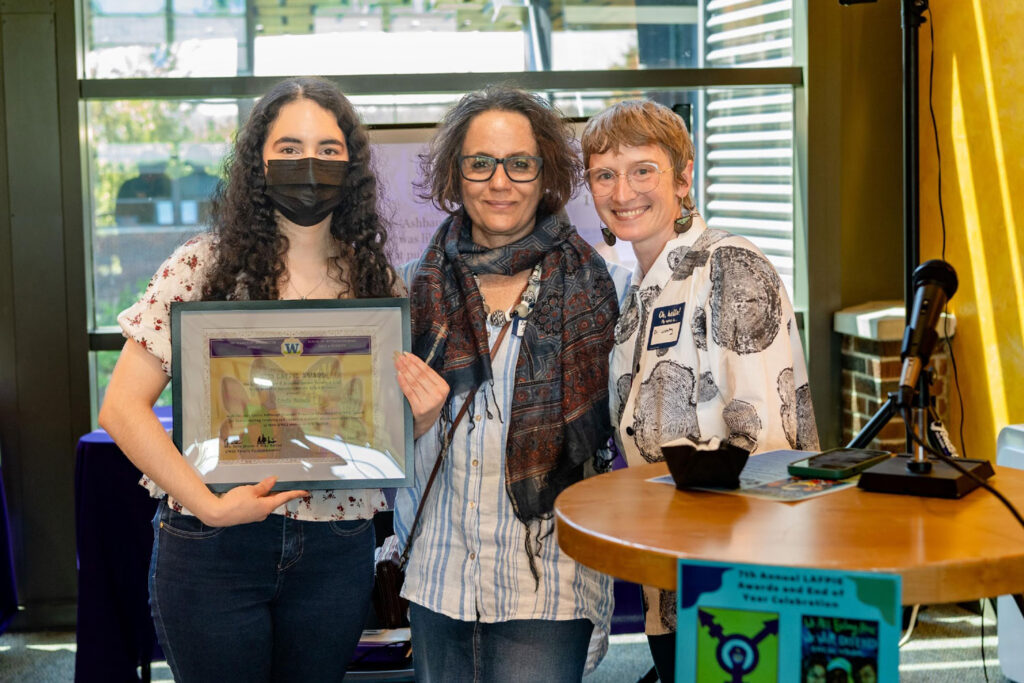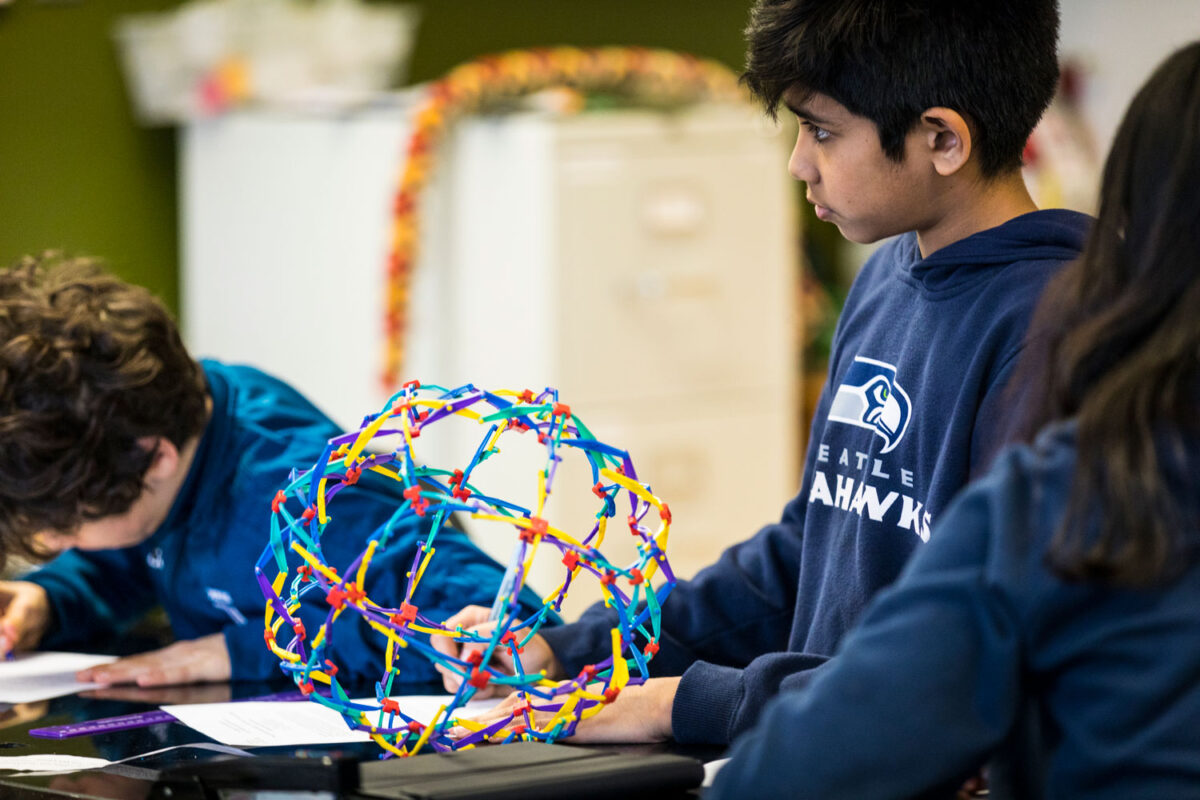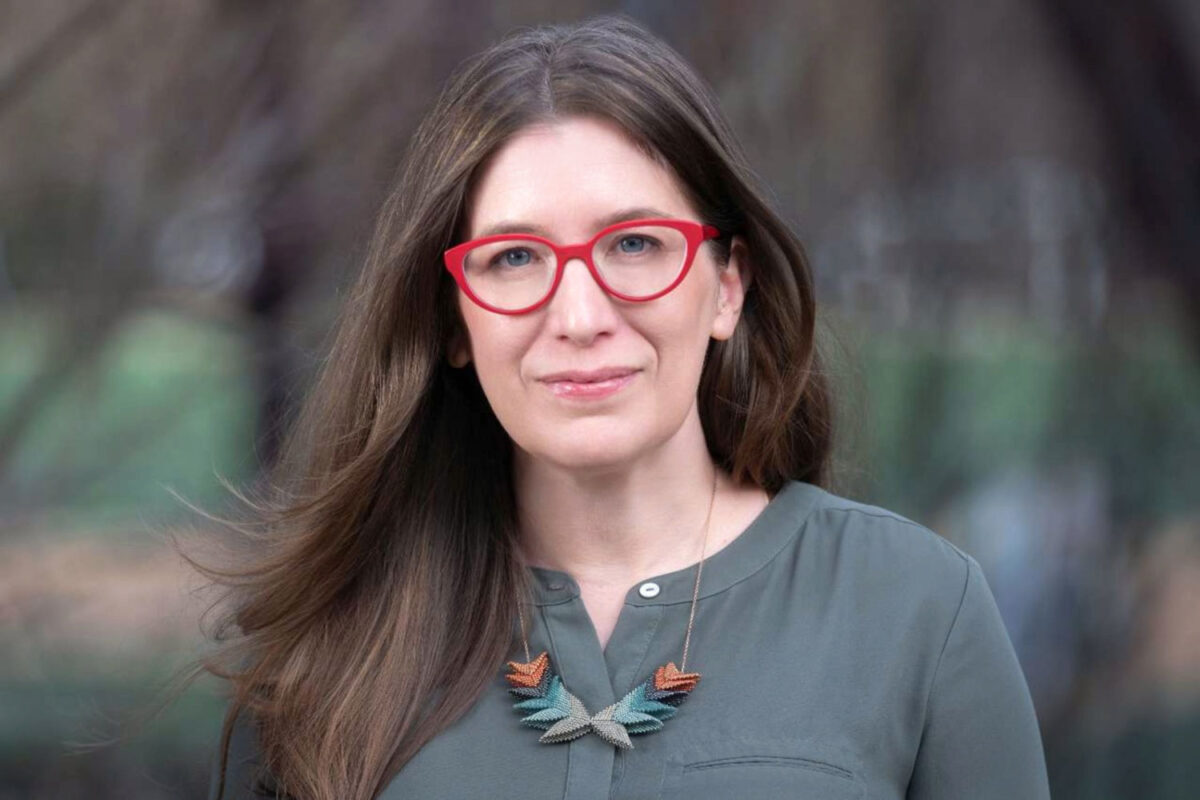Just as there are many colors and gradients that compose a rainbow, so, too, are there a diverse array of experiences and identities that make up the LGBTQ+ community. Much has changed for the better since the rainbow flag was first designed in 1978 as a symbol of queer pride and visibility. Issues around representation and discrimination, however, are still present today.
Some minorities under the queer umbrella face challenges that are unique to their identities. In their latest research, Dr. Lauren Lichty at the University of Washington Bothell works alongside undergraduate co-researcher Emely Zapata (Community Psychology, ’23) to take a closer look at the inclusion and erasure of the aromantic (little to no romantic attraction toward others) and asexual (little to no sexual attraction toward others) orientations.
“The queer community is not a monolith,” writes Lichty in the publication. “Some orientations, such as asexual and aromantic orientations, are excluded, marginalized and pathologized both within the queer community and in broader society. These alienating experiences contribute to negative outcomes such as decreased sense of belonging and safety, reluctance to access care and increased distrust of support-oriented services.”
Lacking support
An expert in community psychology, Lichty’s work has largely revolved around advocating for gender equity and justice. They’ve applied their research across the UW to support prevention and improve response to sexual and relationship violence — including co-developing and serving as a co-lead evaluator for the Husky Prevention and Response, a required online course for UW employees on the prevention of and response to sex- and gender-based violence and harassment.
Lichty, an associate professor in School of Interdisciplinary Arts & Sciences, also incorporates this work into their classroom curriculum. In a participatory action research course, for example, students identified and examined agencies that served different populations, such as domestic violence survivors.
Zapata, a student in the class in 2022, chose to focus on finding sexual and relationship violence resources that support asexual and aromantic people but found no organizations, not even queer-serving organizations, seemed to provide support specific to that group. This piqued Lichty’s interest, and they invited Zapata to become a co-researcher in a project to delve deeper into the issue.
“I’ve always been committed to pursuing social justice, and as someone who’s personally been connected to the queer community, that was a natural connection for me in the project,” Lichty said. “Emely’s an incredibly thoughtful, magnificent human being and a scholar, so it was a real privilege to get to work with her on this project and investigate this issue that she had identified.”

Seeking a model
To limit the scope of the study, the pair set out to examine queer-serving organizations in King County, as well as some national organizations for comparison. Initially, their goal was to identify best practices that could be shared broadly to improve inclusion of asexual (or “ace”) and aromantic (or “aro”) orientations.
They had hoped to discern examples that could serve as a model for other organizations, but no such model could be found.
“Especially given the culture of Seattle, we thought we were going to find quality work where asexual people were included in thoughtful ways, because generally a lot of our local organizations are known for providing good, reasonable support for queer folks,” Lichty said. “We were stunned to find how little inclusion there was.”
Of the 27 queer-focused formal support services they investigated by analyzing web-based content, they found “complete erasure” and representational rather than meaningful inclusion across two thirds of the organizations.
“That erasure, coming specifically from the queer community, was really disappointing to see,” Lichty said.
Routing out erasure
Historically, erasure is something ace and aro identities have long struggled with, particularly when it comes to psychology. Until 2013, asexuality was listed as a disorder in the Diagnostic and Statistical Manual of Mental Disorders — often considered in relation to disorders where low sexual desire results from a chemical or hormonal imbalance and causes distress — rather than being recognized as a legitimate sexual orientation.
Today, many ace and aro folks still fear going to a doctor or a psychologist who might fail to understand that there are healthy experiences that don’t involve any kind of sexual attraction. Lichty added that this ongoing discrimination is why resources for ace and aro people are so important.
“Long term, I hope we can get away from using these labels and just feel far more fluid and freer, and able to think more about how we experience joy and connectedness — whatever that may be — rather than putting so much priority on sexuality,” Lichty said. “But they’re also terms necessary to the visibility and inclusion of the asexuality spectrum, and there’s more that can be done to serve those folks.”
In the study, the co-authors also provided recommendations for how organizations can improve their ace and aro representation, and better understand how to serve those individuals.
“Long term, I hope we can get away from using these labels and just feel far more fluid and freer and able to think more about how we experience joy and connectedness, whatever that may be, rather than putting so much priority on sexuality.”
Dr. Lauren Lichty, associate professor in the School of IAS
Critiquing with love
The two researchers recommend that all queer-serving organizations can benefit from assessing the visibility, depth and accessibility of their online content and resources. In some cases, improving representation may even mean providing better transparency about the specific queer minorities an organization serves — rather than simply using the blanket term “queer” or the LGBTQ+ acronym as catchalls for the people they serve.
Not all queer-serving organizations serve and have resources for ace and aro people, and that’s okay, Lichty said. “Just acknowledging the folks you don’t serve is a transformative move away from complete erasure.”
As the LGBTQ+ community faces increasing challenges politically, there’s a growing need for the resources provided by queer-serving organizations, Lichty said. Through the critical analysis of their research, they hope not to discourage organizations but rather to arm them with information that will help them continue this vital work.
“We love our queer serving organizations. We want them to be well funded, secure and treated with respect and care,” Lichty said. “It’s with love that we offer these recommendations and encourage organizations to be really thoughtful about how they can better include aro and ace folks.”




